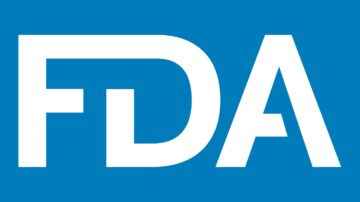The new article addresses aspects related to information regarding sterilization methods the authority expects medical device manufacturers to provide and also explains the approach to be applied with respect to packaging.

Table of Contents
The Food and Drug Administration (FDA or the Agency), the US regulating authority in the sphere of healthcare products, has published a draft guidance document dedicated to patient-matched guides to orthopedic implants. Once finalized, the document will provide clarifications with respect to the applicable regulatory requirements, as well as additional recommendations to be considered by medical device manufacturers and other parties involved in order to ensure compliance. At the same time, provisions of the guidance are non-binding in their legal nature, and are not intended to introduce new rules or impose new obligations. Moreover, the authority explicitly states that an alternative approach could be applied, provided such an approach is in line with the existing regulatory framework and has been agreed upon with the authority in advance.
The scope of the guidance covers, inter alia, aspects related to sterility – the latter is vitally important since products described in the guidance are intended to be in direct contact with blood and bone and, hence, should be in a sterile state in order to ensure the risks related to infections and complications associated with them are mitigated to the extent possible. Under the general rule, patient-matched guides should be either initially supplied in a sterile state or be single-use end-user sterilized devices. The document describes in detail the approach to be applied with respect to each of the abovementioned categories and highlights the key points associated with them.
Devices Provided Sterile
With respect to the products initially supplied and labeled as sterile, the authority expects the following information to be provided:
- General information about the sterilization method used, including:
- A comprehensive description of the sterilization method/process;
- A description of the sterilization chamber if not rigid, fixed (e.g., flexible bag);
- The sterilization site;
- In the case of radiation sterilization, the radiation dose;
- For chemical sterilants (e.g., EO, H2O2), the maximum levels of sterilant residuals that remain on the device, and an explanation of why those levels are acceptable for the device type and the expected duration of patient contact. In this respect, the authority refers to the applicable international standard as AAMI/ANSI/ISO 10993-7: Biological Evaluation of Medical Devices – Part 7: Ethylene Oxide Sterilization Residuals.
- Details of the specific method used to validate the sterilization cycle, and also the data related to such validation. Furthermore, the applicant is expected to provide references to any and all applicable FDA-recognized voluntary consensus standards followed with respect to sterilization, paying special attention to non-compliances with these standards, if any. Should there be no applicable voluntary consensus standards followed, the applicant will have to provide a detailed enough description of the processes and procedures along with the complete validation protocol.
- Indication of the sterility assurance level, which should meet the applicable requirements.
The authority also mentions that as patient-matched guides rely upon a specific geometrical configuration to establish a unique alignment to the patient’s anatomy, it is important to consider the impact of the sterilization process on the guide’s geometrical configuration. It is further explained that during the development of the sterilization process, manufacturers should ensure that guides do not deform unacceptably during the final recommended sterilization process.
Single-use Devices Provided Non-Sterile and Intended for Sterile Processing
As it was mentioned before, instead of supplying medical devices in a sterile state, the manufacturer could supply them as non-sterile single-use medical devices, while the end users would be responsible for the sterilization process such devices should undergo before being used for their intended purpose. In such a case, the medical device manufacturer will be responsible for providing detailed enough instructions on reprocessing the device in order to ensure it is ready for use. The recommendations provided in such instructions should address aspects related to the validation process. In this respect, the authority refers to a separate guidance document dedicated to reprocessing medical devices in healthcare settings (validation methods and labeling).
The authority further emphasizes the importance of taking into consideration the geometry of the device when developing sterilization processes to be used. In particular, it is important to ensure that the device, its safety, and effectiveness are not adversely affected by the sterilization procedures the device is supposed to undergo while ensuring the proper effectiveness of such procedures.
Shelf Life and Packaging
The scope of the guidance also covers aspects related to shelf life and packaging. According to the document, if the patient-matched guide is provided non-sterile, the shelf life should reflect an appropriate duration between the acquisition of patient imaging and the planned surgical intervention to ensure that the anatomical situation has not changed such that guide performance can be affected. At the same time, if the patient-matched guide is provided sterile, shelf life testing should additionally be conducted to support the proposed expiration date through evaluation of the package integrity for maintaining device sterility and/or evaluation of any changes to device performance or functionality.
Based on the above, the authority expects medical device manufacturers to develop and provide a description of the packaging used, paying special attention to the way it is supposed to ensure the device remains in a sterile state. Furthermore, the manufacturer is expected to retain copies of the respective testing protocols.
In summary, the present FDA guidance describes the approach to be applied with respect to sterility for patient-matched guides depending on whether the product is initially supplied sterile or should undergo sterilization to be conducted by the end user. The document also covers matters related to packaging, which should be designed in a way to ensure the sterility of the device initially supplied is maintained.
How Can RegDesk Help?
RegDesk is a holistic Regulatory Information Management System that provides medical device and pharma companies with regulatory intelligence for over 120 markets worldwide. It can help you prepare and publish global applications, manage standards, run change assessments, and obtain real-time alerts on regulatory changes through a centralized platform. Our clients also have access to our network of over 4000 compliance experts worldwide to obtain verification on critical questions. Global expansion has never been this simple.
Want to know more about our solutions? Speak to a RegDesk Expert today!
–>
- SEO Powered Content & PR Distribution. Get Amplified Today.
- PlatoData.Network Vertical Generative Ai. Empower Yourself. Access Here.
- PlatoAiStream. Web3 Intelligence. Knowledge Amplified. Access Here.
- PlatoESG. Automotive / EVs, Carbon, CleanTech, Energy, Environment, Solar, Waste Management. Access Here.
- PlatoHealth. Biotech and Clinical Trials Intelligence. Access Here.
- ChartPrime. Elevate your Trading Game with ChartPrime. Access Here.
- BlockOffsets. Modernizing Environmental Offset Ownership. Access Here.
- Source: https://www.regdesk.co/fda-on-patient-matched-guides-sterilization-and-packaging/?utm_source=rss&utm_medium=rss&utm_campaign=fda-on-patient-matched-guides-sterilization-and-packaging
- :has
- :is
- :not
- 1
- 7
- a
- About
- above
- acceptable
- access
- According
- acquisition
- Additional
- Additionally
- address
- addresses
- advance
- adversely
- agency
- agreed
- Alerts
- All
- along
- also
- alternative
- an
- anatomy
- and
- any
- applicable
- applications
- applied
- approach
- appropriate
- ARE
- article
- AS
- aspects
- assessments
- associated
- assurance
- At
- attention
- authority
- bag
- BE
- been
- before
- being
- between
- blood
- BONE
- by
- CAN
- case
- categories
- centralized
- Chamber
- change
- changed
- Changes
- chemical
- clients
- Companies
- complete
- compliance
- comprehensive
- conducted
- Configuration
- Consensus
- Consider
- consideration
- considered
- contact
- copies
- could
- covers
- critical
- cycle
- data
- Date
- dedicated
- Depending
- described
- description
- designed
- detail
- detailed
- develop
- developing
- Development
- device
- Devices
- direct
- do
- document
- dose
- draft
- drug
- duration
- during
- e
- each
- effectiveness
- either
- emphasizes
- end
- enough
- ensure
- ensuring
- establish
- evaluation
- existing
- expansion
- expected
- expects
- expert
- experts
- expiration
- explained
- Explains
- explanation
- extent
- fda
- final
- finalized
- fixed
- flexible
- followed
- following
- food
- For
- Framework
- functionality
- further
- Furthermore
- General
- geometry
- Global
- global expansion
- guidance
- guide
- Guides
- Have
- healthcare
- help
- hence
- highlights
- holistic
- HTTPS
- if
- Imaging
- Impact
- importance
- important
- impose
- in
- Including
- Infections
- information
- initially
- instead
- instructions
- integrity
- Intelligence
- intended
- International
- intervention
- into
- introduce
- involved
- IT
- ITS
- Key
- Know
- labeling
- Legal
- Level
- levels
- Life
- Line
- maintaining
- manage
- management
- management system
- Manufacturer
- Manufacturers
- Markets
- Matters
- max-width
- maximum
- medical
- medical device
- medical devices
- Meet
- mentioned
- mentions
- method
- methods
- more
- Moreover
- Nature
- network
- never
- New
- no
- obligations
- obtain
- of
- on
- once
- or
- order
- Orthopedic
- Other
- our
- over
- package
- packaging
- part
- particular
- parties
- patient
- paying
- performance
- Pharma
- planned
- platform
- plato
- Plato Data Intelligence
- PlatoData
- points
- possible
- Prepare
- present
- procedures
- process
- processes
- Product
- Products
- proper
- proposed
- protocol
- protocols
- provide
- provided
- provides
- providing
- publish
- published
- purpose
- Questions
- Radiation
- ready
- real-time
- recommendations
- recommended
- references
- refers
- reflect
- regarding
- regulating
- regulatory
- related
- rely
- remain
- remains
- Requirements
- respect
- respective
- responsible
- retain
- rigid
- risks
- Rule
- rules
- Run
- Safety
- same
- scope
- separate
- settings
- Shelf
- should
- Simple
- since
- site
- situation
- Solutions
- Sources
- speak
- special
- specific
- standard
- standards
- State
- States
- such
- SUMMARY
- supplied
- supply
- supplying
- support
- supposed
- surgical
- system
- taking
- Testing
- that
- The
- their
- Them
- There.
- These
- this
- those
- Through
- time
- Title
- to
- type
- under
- undergo
- unique
- upon
- us
- use
- used
- User
- users
- VALIDATE
- validation
- Verification
- voluntary
- want
- was
- Way..
- WELL
- when
- whether
- which
- while
- why
- will
- with
- worldwide
- would
- you
- zephyrnet












